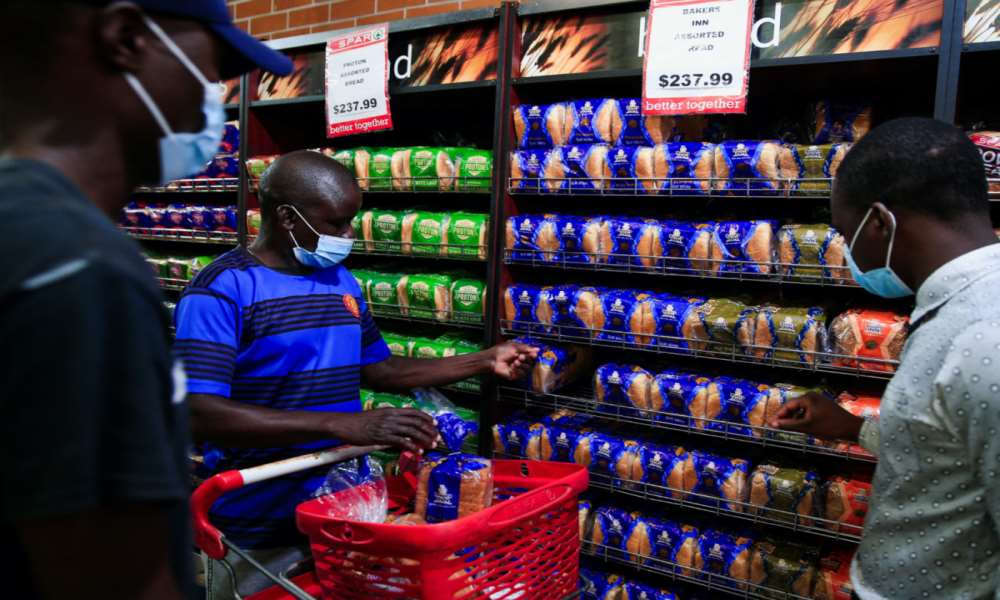Cost of living crisis a key global risk
Outlook for the next two years
The persistence of a global cost-of-living crisis could result in a growing proportion of the most vulnerable parts of society being priced out of access to basic needs.
Cost-of-living crisis is ranked as the most severe global risk over the next two years, according to the Global Risks Perception Survey (GRPS).
The persistence of a global cost-of-living crisis could result in a growing proportion of the most vulnerable parts of society being priced out of access to basic needs, fueling unrest and political instability. Continued supply-chain disruptions could lead to sticky core inflation, particularly in food and energy. This could fuel further interest rate hikes, raising the risk of debt distress, a prolonged economic downturn and a vicious cycle for fiscal planning, the report reads.
According to Allianz Risk Barometer 2023, macroeconomic developments such as inflation or economic and financial market volatility were rank as the third top risk for companies globally in 2023 (25%), up from number 10 in 2022 – the first time this risk has appeared in the top three for a decade. It rises to third from seventh in Namibia and ranks as a top three risk in Burundi, Ghana, Ivory Coast, Madagascar, Mauritius, Morocco, Namibia, Nigeria and Tanzania.
All three major economic areas – the United States (US), China and Europe – are in a crisis mode at the same time, albeit for different reasons, which forecasts recession in Europe and the US in 2023.
Inflation in Namibia averaged 6.1% in 2022 and came in at 6.9% in December last year.
Forecast
PSG expects food price inflation to peak in the first quarter of 2023 before subsiding during the rest of the year.
The elevated global maize price and Namibian dollar weakness will keep upward pressure on food price inflation in 2023. “Based on the above factors, weaker domestic demand, and higher interest rates, we expect the average inflation rate to moderate to 5.0% this year,” PSG said.
Moreover, Simonis Storm maintain the view of observing persistently lower inflation rates going forward into 2023. Lower petrol prices will be the main driving force in lowering headline inflation in Namibia, followed by a stronger Rand during first quarter of 2023 and continued supply chain pressure easing.
Lastly, IJG Securities said “while we expect inflation to continue to slow into 2023, a close eye will be kept on January’s print as the month usually marks the revision of rental prices in the Namibia Consumer Price Index (NCPI) basket, which anchors about a quarter of the inflation basket for the rest of the year. “The current economic climate and property market dynamics have us believe that we could see another year of relatively low inflation in this line item for 2023, but somewhat higher than last year.”
IJG’s inflation model currently forecasts Namibia’s annual inflation rate to continue to steadily slow during the course of 2023, before reaching around 4.1% at the end of the [email protected]
The persistence of a global cost-of-living crisis could result in a growing proportion of the most vulnerable parts of society being priced out of access to basic needs, fueling unrest and political instability. Continued supply-chain disruptions could lead to sticky core inflation, particularly in food and energy. This could fuel further interest rate hikes, raising the risk of debt distress, a prolonged economic downturn and a vicious cycle for fiscal planning, the report reads.
According to Allianz Risk Barometer 2023, macroeconomic developments such as inflation or economic and financial market volatility were rank as the third top risk for companies globally in 2023 (25%), up from number 10 in 2022 – the first time this risk has appeared in the top three for a decade. It rises to third from seventh in Namibia and ranks as a top three risk in Burundi, Ghana, Ivory Coast, Madagascar, Mauritius, Morocco, Namibia, Nigeria and Tanzania.
All three major economic areas – the United States (US), China and Europe – are in a crisis mode at the same time, albeit for different reasons, which forecasts recession in Europe and the US in 2023.
Inflation in Namibia averaged 6.1% in 2022 and came in at 6.9% in December last year.
Forecast
PSG expects food price inflation to peak in the first quarter of 2023 before subsiding during the rest of the year.
The elevated global maize price and Namibian dollar weakness will keep upward pressure on food price inflation in 2023. “Based on the above factors, weaker domestic demand, and higher interest rates, we expect the average inflation rate to moderate to 5.0% this year,” PSG said.
Moreover, Simonis Storm maintain the view of observing persistently lower inflation rates going forward into 2023. Lower petrol prices will be the main driving force in lowering headline inflation in Namibia, followed by a stronger Rand during first quarter of 2023 and continued supply chain pressure easing.
Lastly, IJG Securities said “while we expect inflation to continue to slow into 2023, a close eye will be kept on January’s print as the month usually marks the revision of rental prices in the Namibia Consumer Price Index (NCPI) basket, which anchors about a quarter of the inflation basket for the rest of the year. “The current economic climate and property market dynamics have us believe that we could see another year of relatively low inflation in this line item for 2023, but somewhat higher than last year.”
IJG’s inflation model currently forecasts Namibia’s annual inflation rate to continue to steadily slow during the course of 2023, before reaching around 4.1% at the end of the [email protected]




Kommentaar
Republikein
Geen kommentaar is op hierdie artikel gelaat nie